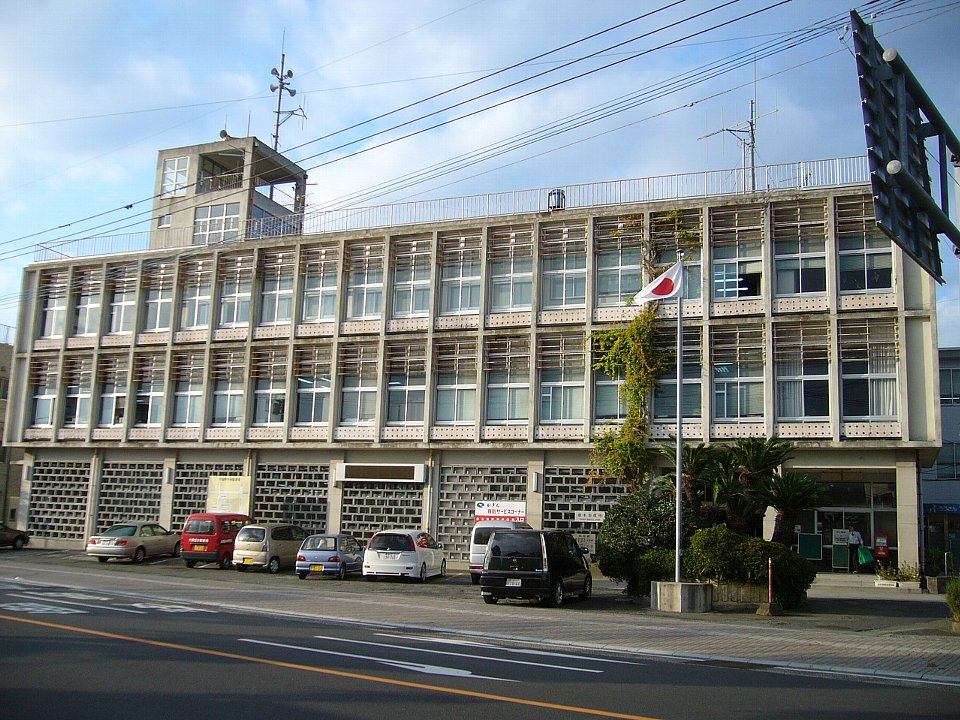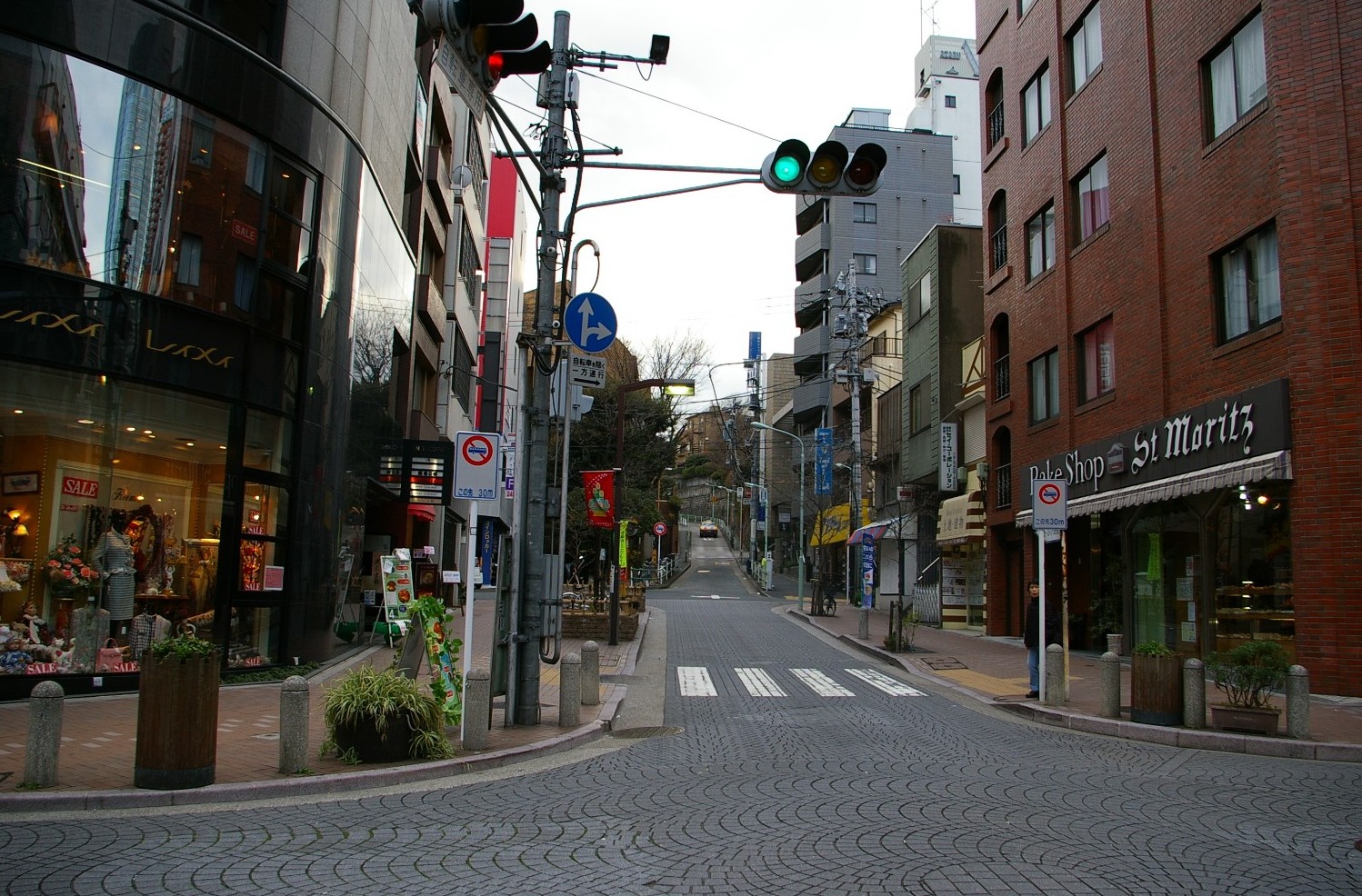|
Wada Eisaku
was a Japanese painter and luminary of the ''yōga'' (or Western-style) scene in the late Meiji (era), Meiji, Taishō, and Shōwa (1926–1989), Shōwa eras. He was a member of the Japan Art Academy, an Imperial Household Artist, a recipient of the Order of the Sacred Treasure and Order of Culture, an ''Officier'' in the Legion of Honour, Légion d'honneur, and a Person of Cultural Merit. Biography Born in what is now the city of Tarumizu, Kagoshima, Tarumizu, Kagoshima Prefecture, Japan, in 1874, little Eisaku moved to Azabu in Tokyo with his family at the age of four or five when his father , a pastor, was appointed as an instructor in English at the Imperial Japanese Naval Academy, Naval Academy. In 1887 the young Wada entered the Protestant ; among his classmates was fellow yōga painter , while author Tōson Shimazaki was in one of the years above. After learning the rudiments of Western-style painting from Uesugi Kumatsu, with his introduction, dropping out of Meiji Gakuin ... [...More Info...] [...Related Items...] OR: [Wikipedia] [Google] [Baidu] |
Tarumizu, Kagoshima
is a Cities of Japan, city located in Kagoshima Prefecture, Japan. The city was founded on October 1, 1958. As of April 2017, the city has an estimated population of 14,847 and a population density of 92 persons per km². The total area is 162.12 km². History In February 1944, the Tarumizu Maru, a passenger ferry, set sail for Kagoshima and capsized within minutes. 466 passengers were reported dead. References External links Tarumizu City official website Kagoshima Prefectural Visitors Bureau official website * * Cities in Kagoshima Prefecture {{Kagoshima-geo-stub ... [...More Info...] [...Related Items...] OR: [Wikipedia] [Google] [Baidu] |
Order Of Culture
The is a Japanese order, established on February 11, 1937. The order has one class only, and may be awarded to men and women for contributions to Japan's art, literature, science, technology, or anything related to culture in general; recipients of the order also receive an annuity for life. The order is conferred by the Emperor of Japan in person on Culture Day (November 3) each year. It is considered equivalent to the highest rank (Grand Cordon) of the Order of the Rising Sun, the Order of the Sacred Treasure, and the Order of the Precious Crown. The only orders that Japanese emperors bestow on recipients by their own hands are the Collar of the Supreme Order of the Chrysanthemum, the Grand Cordon of each order, and the Order of Culture. The badge of the order, which is in gold with white enamel, is in the form of a Tachibana orange blossom; the central disc bears three crescent-shaped jades ('' magatama''). The badge is suspended on a gold and enamel wreath of mandarin or ... [...More Info...] [...Related Items...] OR: [Wikipedia] [Google] [Baidu] |
Nihonga
''Nihonga'' (, "Japanese-style paintings") are Japanese paintings from about 1900 onwards that have been made in accordance with traditional Japanese artistic conventions, techniques and materials. While based on traditions over a thousand years old, the term was coined in the Meiji period of Imperial Japan, to distinguish such works from Western-style paintings or ''Yōga'' (). History The impetus for reinvigorating traditional painting by developing a more modern Japanese style came largely from many artist/educators, which included Shiokawa Bunrin, Kōno Bairei, Tomioka Tessai and art critics Okakura Tenshin and Ernest Fenollosa, who attempted to combat Meiji Japan's infatuation with Western culture by emphasizing to the Japanese the importance and beauty of native Japanese traditional arts. These two men played important roles in developing the curricula at major art schools, and actively encouraged and patronized artists. ''Nihonga'' was not simply a continuation of olde ... [...More Info...] [...Related Items...] OR: [Wikipedia] [Google] [Baidu] |
Harada Naojirō
Harada Naojirō (; 12 October 1863 – 26 December 1899) was a Japanese painter who specialized in the ''yōga'' (Western) style. He was a friend of the novelist Mori Ōgai and served as the model for the protagonist in Ōgai's short story ' (1890). Life and career Early life Harada Naojirō was born in the Koishikawa area of Edo (modern Tokyo) on 12 October 1863. He was the second son of Ai and . Ichidō worked for the military government at the Bansho Shirabesho, where foreign books were studied and translated. He wanted his son to learn French, and to this end had Naojirō enrolled at the Osaka Kaisei School in 1870 and at the in 1873, from where he graduated in 1881. That August he married Ōkubo Sada. From the age of eleven Harada began studying ''yōga'', or Western-style painting under Yamazaki Nariaki, and from 20 under Takahashi Yuichi, who at the time was the most prominent ''yōga'' painter in Japan. Study in Europe Harada moved to Germany in 1884, ... [...More Info...] [...Related Items...] OR: [Wikipedia] [Google] [Baidu] |
Soyama Sachihiko
was a Japanese painter of the ''yōga'' (or Western-style) movement in the Meiji (era), Meiji era. The characters of his given name may also be read Yukihiko; later he was known as . Biography Born in Kagoshima, Kagoshima, Kagoshima, he studied in Tokyo at the under Achille San Giovanni and . Later he became assistant professor in the Tokyo Imperial University School of Technology. He also opened his own school, the . His students included Fujishima Takeji, Wada Eisaku, Okada Saburōsuke, , , and . See also * Nihonga References {{DEFAULTSORT:Soyama, Sachihiko 1859 births 1892 deaths Yōga painters People from Satsuma Domain People from Kagoshima Artists from Kagoshima Prefecture ... [...More Info...] [...Related Items...] OR: [Wikipedia] [Google] [Baidu] |
Tōson Shimazaki
was the pen-name of Haruki Shimazaki, a Japanese writer active in the Meiji, Taishō and early Shōwa periods of Japan. He began his career as a Romantic poet, but went on to establish himself as a major proponent of Japanese Naturalism. Early life Shimazaki was born in the old post town of Magome-juku, Nagano Prefecture (now part of Nakatsugawa, Gifu Prefecture), as son of Masaki Shimazaki and his wife Nui. In 1881, he was sent to Tokyo by his father to acquire an education. Masaki, who showed an increasingly eccentric behaviour and suffered from hallucinations, was interned by his family in a self-built cell and died when Shimazaki was only fourteen. Shimazaki's oldest sister Sono Takase also suffered from mental disorders in her late years. Shimazaki was baptised in 1888 while studying at the Christian Meiji Gakuin University, where he befriended essayists and translators Baba Kochō and Shūkotsu Togawa. He took first steps in writing and contributed to a literary magaz ... [...More Info...] [...Related Items...] OR: [Wikipedia] [Google] [Baidu] |
Kariya City Art Museum
opened in Kariya, Aichi Prefecture, Japan in 1983. The collection focuses on local, modern, post-war, and contemporary art, and includes some 3,441 works by 168 artists, as of April 2020. See also * List of Cultural Properties of Japan - paintings (Aichi) * List of Historic Sites of Japan (Aichi) * Aichi Arts Center is the main venue for the performing arts in Nagoya, Aichi Prefecture, Japan. The center consists of: *Aichi Prefectural Museum *Aichi Prefectural Arts Theater **Main Hall **Concert Hall *Aichi Prefectural Arts Promotion Service *Aichi Prefect ... References External links *Kariya City Art Museum*Collection database Kariya, Aichi Art museums and galleries in Aichi Prefecture Art museums established in 1983 1983 establishments in Japan {{Japan-museum-stub ... [...More Info...] [...Related Items...] OR: [Wikipedia] [Google] [Baidu] |
Independent Administrative Institution
An Incorporated Administrative Agency (独立行政法人, ''Dokuritsu gyōsei hōjin'' or ''Dokugyo'' in abbreviation) is a type of legal corporation formulated by the Government of Japan under the Act on General Rules for Incorporated Administrative Agencies (Act no. 103 of 1999, revised in 2014). The independent agencies are not under the National Government Organization Act that provides for the ministries and agencies of Japan. Originally proposed by the Administrative Reform Council, the independent agencies are created based on the concept of separating the ministries and agencies of the government into planning functions and operation functions. Planning functions remain within government-based ministries and agencies while operating functions are transferred to the independent agencies. Incorporated Administrative Agencies utilize management methods of private-sector corporations and are given considerable autonomy in their operations and how to use their given budgets. I ... [...More Info...] [...Related Items...] OR: [Wikipedia] [Google] [Baidu] |
Imperial Japanese Naval Academy
The was a school established to train line officers for the Imperial Japanese Navy. It was originally located in Nagasaki, moved to Yokohama in 1866, and was relocated to Tsukiji, Tokyo in 1869. It moved to Etajima, Hiroshima in 1888. Students studied for three or four years, and upon graduation were ordered (warranted) as Midshipmen, commissioned to the rank of Ensign/ Acting Sub-Lieutenant after a period of active duty and an overseas cruise. In 1943, a separate school for naval aviation was opened in Iwakuni, and in 1944, another naval aviation school was established in Maizuru. The Academy was closed in 1945, when the Imperial Japanese Navy was abolished. The Naval Academy Etajima opened in 1956 and the site now serves as the location for Officer Candidate School of the Japan Maritime Self-Defense Force. See also *Imperial Japanese Army Academy * Army War College *Imperial Japanese Army Air Force Academy *Imperial Japanese Navy *Imperial Japanese Naval Engineering College *Na ... [...More Info...] [...Related Items...] OR: [Wikipedia] [Google] [Baidu] |
Pastor
A pastor (abbreviated as "Pr" or "Ptr" , or "Ps" ) is the leader of a Christian congregation who also gives advice and counsel to people from the community or congregation. In Lutheranism, Catholicism, Eastern Orthodoxy, Oriental Orthodoxy and Anglicanism, pastors are always ordained. In Methodism, pastors may be either licensed or ordained. Pastors are to act like shepherds by caring for the flock, and this care includes teaching. The New Testament typically uses the words "bishops" ( Acts 20:28) and "presbyter" ( 1 Peter 5:1) to indicate the ordained leadership in early Christianity. Likewise, Peter instructs these particular servants to "act like shepherds" as they "oversee" the flock of God ( 1 Peter 5:2). The words "bishop" and "presbyter" were sometimes used in an interchangeable way, such as in Titus 1:5-6. However, there is ongoing dispute between branches of Christianity over whether there are two ordained classes (presbyters and deacons) or three (bishops, priests, an ... [...More Info...] [...Related Items...] OR: [Wikipedia] [Google] [Baidu] |
Azabu
is an area in Minato,Tokyo, Japan. Built on a marshy area of foothills south of central Tokyo, its coverage roughly corresponds to that of the former Azabu Ward, presently consisting of nine official districts: Azabu-Jūban, Azabudai, Azabu-Nagasakachō, Azabu-Mamianachō, Nishi-Azabu, Higashi-Azabu, Moto-Azabu and Roppongi. It is known as one of Tokyo's most expensive and upscale residential districts with many artists, business people, and celebrities residing there. It is also known for its large foreign population, due in part to a number of foreign embassies present in the area. History The name Azabu literally means hemp cloth. Until the early Edo period, the area was agricultural. Archaeological evidence indicates that the area was inhabited as far back as the Jōmon period. The Juban Inari shrine (formerly known as Takechiyo Inari) was constructed in AD 712, the temple of Zenpuku-ji in 824, and the Hikawa Shrine in 939 (on orders of Minamoto no Tsunemoto). Th ... [...More Info...] [...Related Items...] OR: [Wikipedia] [Google] [Baidu] |




.jpg)
